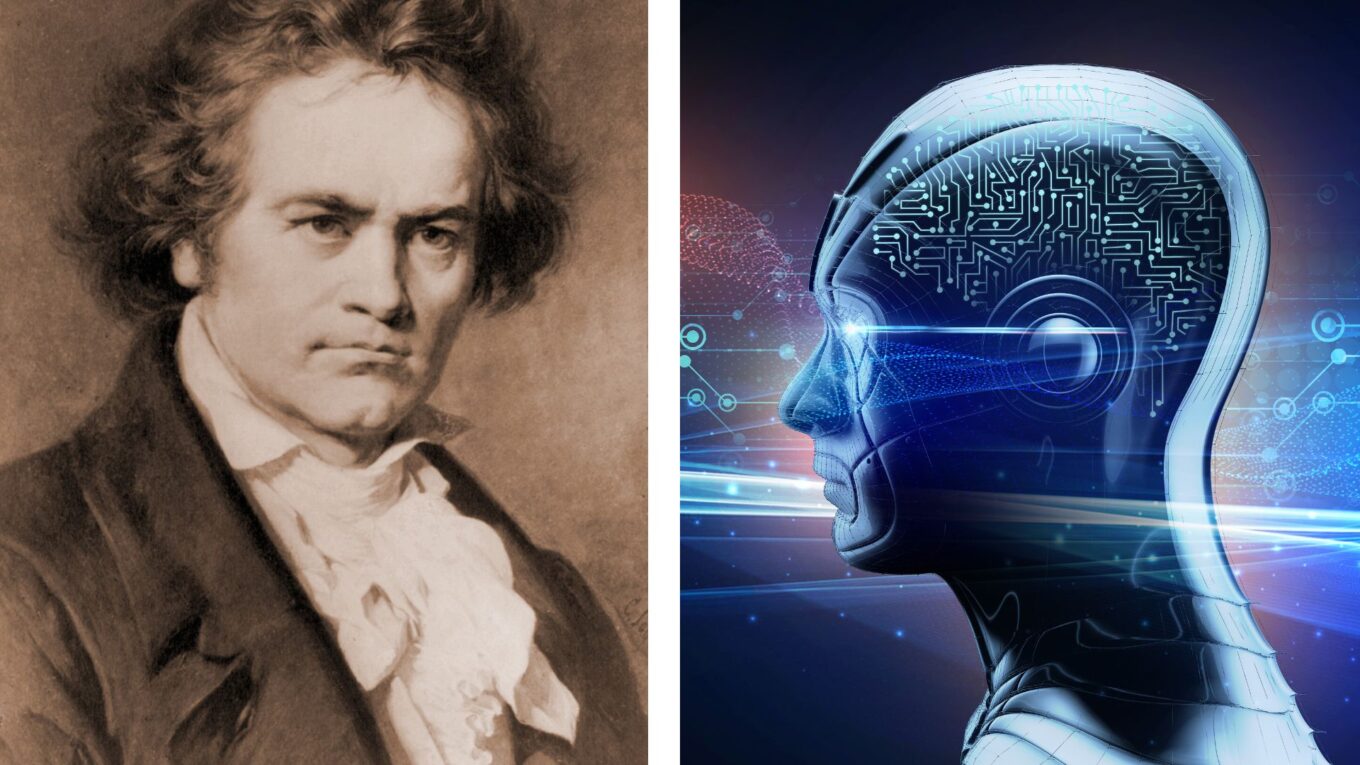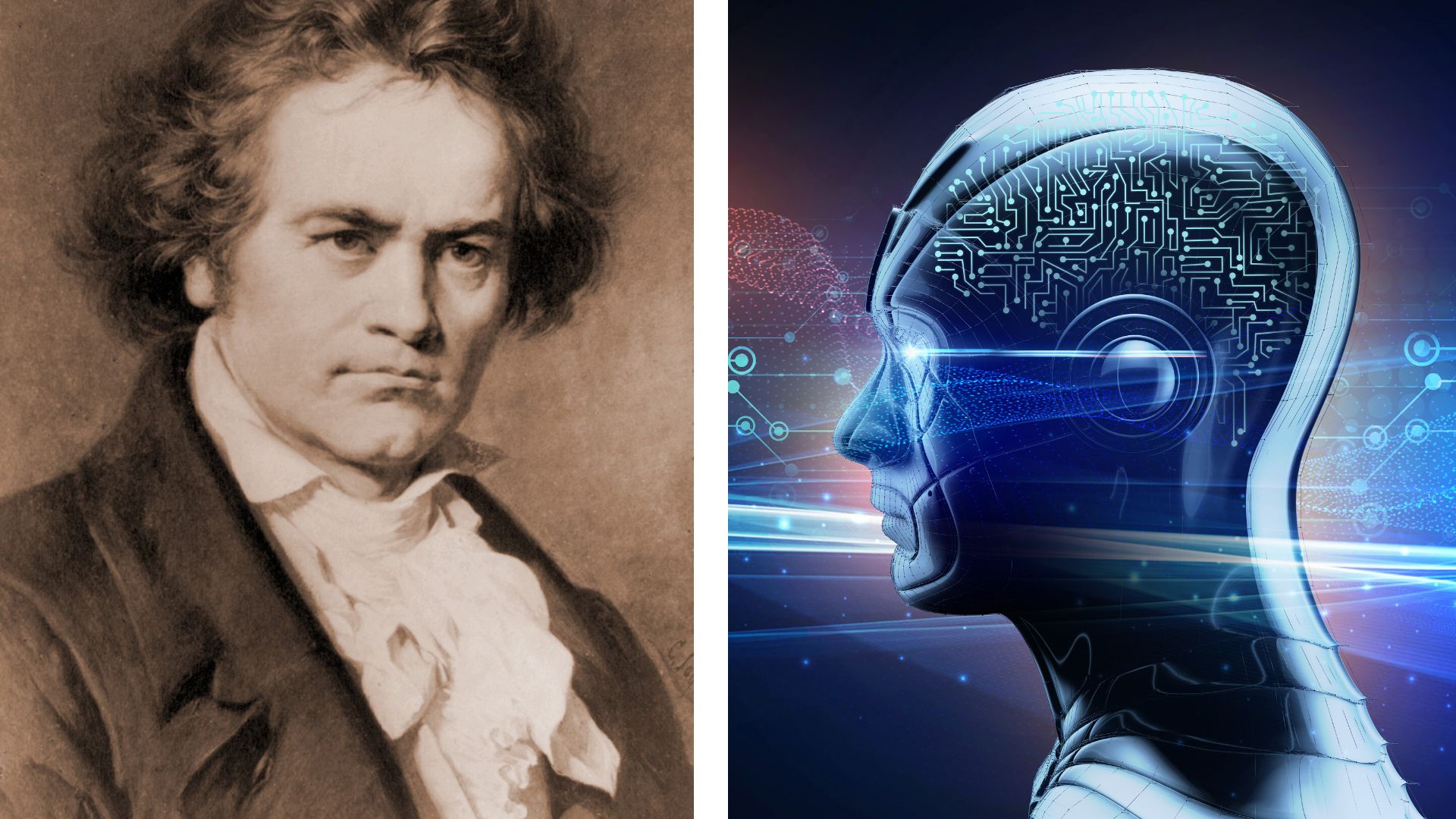Beethoven, ChatGPT, Database, and Clinical Reasoning
Objective
The world of the Artificial Intelligence (AI) is touching now every aspect of our lives. Could be this group of new tools really useful for doctors and patients to help in the improving of a medical diagnosis? There is not a definitive answer to this question, but it is clear that we have to consider the possible implications to the clinical practice. We will analyze here the contribution of very well known tools used in Medicine, such as PubMed, UptoDate, in comparison with one of the most popular tools in AI, ChatGPT, practicing an exercise of “historical diagnosis” studying the biography of Ludwig Van Beethoven and the health problems that he suffered along his life.
A Clinical Summary of Ludwig Van Beethoven
Beethoven died in 1827 at the age of 57. When he was in his late twenties, he started with tinnitus and a progressive hearing loss, that was complete in his middle forties. He described in a letter this symptom who terrifies himself, but , at the same time, he made some references to his “abdominal problems”, with periodical abdominal pain and diarrhea, without an association with fever or vomiting. These digestive symptoms seem to be present before the hearing loss started, with some episodes of bloody diarrhea.
There was a clinical evidence of the presence of ascites close to the time of his death, treated with paracentesis at least in three occasions, suffering and infection at least once, associated with this procedure.
In the autopsy report written by Dr. Wagner in 1827, probably made without the actual standards, the findings were a multinodular liver and ascites, without apparent data of infections in his lung and calcareous deposits in the kidneys (1). The inspection of the bowel was not complete.
The final conclusion about the cause of death was a liver cirrhosis, possibly associated with alcohol exposure and/or a viral infection. Data on the presence of a hepatitis B infection has been confirmed recently in a genetic analysis of hair material from Beethoven (2). One of the clinical possibilities, a lead intoxication associated with a treatment given by his doctor, have been discharged, after looking specifically to the amount of this mineral of hair extracted from the composer in the moment of his death.
Focusing into the clinical problem. Looking for a diagnosis
What is clear until now is that the presence of a liver cirrhosis with ascites was present in the moment of the death of the composer, associated probably with an infection of the ascites due to a non aseptic manipulation. We don´t know much more, but the autopsy had clear limitations for our present standards. There is information that the auditives nerves were “atrophic”. Traits of the presence of a hepatitis B infection were detected in the genetic analysis, but not a lead toxic level in the analysis of the hair. The hearing loss was associated with otosclerosis and the renal damage with a possible analgesic abuse, associated with abdominal and back pain.
A practical approach trying to improve a diagnosis
As a summary, there is no doubt that a liver insufficiency with ascites was present, but the principal challenge was to pay attention to the two main symptoms, an evolutive deafness and abdominal pain and diarrhea, starting around his twenties. We can consider both problems independent one from the other, and then otosclerosis and an “inflamatory” disease in the bowel can be the best explanation of the clinical picture (3). But, what happens if we try to include the whole clinical spectrum under the name of a single disease or syndrome? Let show to you what we have done.
First step: My Clinical Reasoning skills. I am a medical oncologist, then I have limitations to select a wide differential diagnosis like an internist. I thought as a possibility in a general nerve degeneration, with a malfunction of the autonomous nervous system, that could explain the deafness and a lack of control of the normal bowel movement. Although I tried to think about, I was not able to select a single entity or syndrome to include the whole clinical picture.
Second step: Using ChatGPT. I decided to try to retrieve information from the popular tool ChatGPT, but a “demo” app, with restrictions. I asked: What disease can associate a diarrhea, periodical abdominal pain and a deafness? I obtained different answer every time I tried, but the first one was this comment: “There are several diseases that can associate deafness, periodical abdominal pain and diarrhea, but one of the most common is Ménétriere´s disease”. Other possibilities were mitochondrial encephalomyopathy, lactic acidosis, and stroke-like episodes (MELAS). Infections, inflammatory bowel disease and food intolerance were other possible causes of the symptoms.
When you asked to ChatGPT about “Ménétriere´s disease and deafness together, the answer was: “Deafness is not a typical symptom of Ménétriere´s disease. However, in rare cases, Ménétriere´s disease may cause neurological symptoms such as peripheral neuropathy, which can affect the nerves responsible for hearing and result in hearing loss”.
Third step: searching PubMed
![]() (An official website of the United States government)
(An official website of the United States government)
We use the terms “Abdominal pain” AND “Diarrhea” AND “Deafness”. The first papers retrieved were associated with MELA syndrome, a genetic disease with a point-mutation, usually with deafness but also diabetes, also with digestive symptoms with abdominal pain and vomiting (4).
Fourth step: UptoDate (R). We introduce the term “Ménétriere´s disease” or “Deafness” individually, we don´t obtain any relation with each other in this database.
Conclusion
- We don´t exactly know the cause of the abdominal pain and diarrhea of Ludwig van Beethoven, but it is quite plausible an inflammatory process, probably an ulcerative colitis. The same situation happens when we take into account the symptom of deafness, probably associated with otosclerosis or a damage of the nerves auditives, associated with a genetic problem or an exposure to ototoxic substances. In the autopsy made in the proper bed of the composer, was evident the presence of a nodular liver and ascites, and probably some renal damage described in more recent times as “papillary necrosis”. Curiously, there is a lack of information about the digestive system.
- The final hours of the life of Beethoven were probably determined for a liver insufficiency and a septic status after several paracentesis.
- The clinical picture of Ménétriere´s disease includes abdominal pain, vomiting, and generalized edema, in relation to losing proteins, a clinical picture not similar to the one for Beethoven.
- We have used several strategies to try to get more information to improve our clinical reasoning. The truth is that, at the end, every tool gives you this information in a different way that your brain will integrate, but in a theoretical exercise like this, it is very difficult a major change in your first diagnostic impression. PubMed gives you an important amount of information and you have to sail in the big ocean of multiple possibilities. UptoDate is like a rock or an island in the middle of the ocean, where you are going to find “evidences” based on the standard that we know about every subject. ChatGPT is a new tool, still without a definitive orientation to improve diagnosis, but in my opinion, gives you an information hidden in some dark cavern inside your brain, and definitely will evolve to help with uncommon diagnoses or difficult clinical association worth of considering. At the end curiosity is the life motif in Clinical Medicine to learn from new situations or uncommon diagnoses.
Bibliography
1) Schwarz a. Beethoven´s renal disease based on his autopsy: a case of papillary necrosis. Am J Kidney Dis. 1993 Jun;21(6):643-52. doi: 10.1016/s0272-6386(12)80038-2.
3) Allen,PW. Beethoven’s triad: Diarrhoea, deafness and cirrhosis. A plausible solution to the 195-year-old controversy.Annals of Diagnostic Pathology 58 (2022) 151904
Author: Dr. Lorenzo Alonso Carrión
FORO OSLER




Lorenzo, your reflection is great.
I used the same strategy as you and asked ChatGTP : “Whipple disease can associate a diarrhea, periodic abdominal pain and a deafness?”
ChatGTP: Yes, Whipple’s disease can present with a range of symptoms including diarrhea, abdominal pain, and hearing loss. Other possible symptoms may include weight loss, joint pain, fever, and neurological symptoms such as confusion, seizures, and vision problems.
ChatGTP has hallucinated!
Very interesting. A lot of possibilities